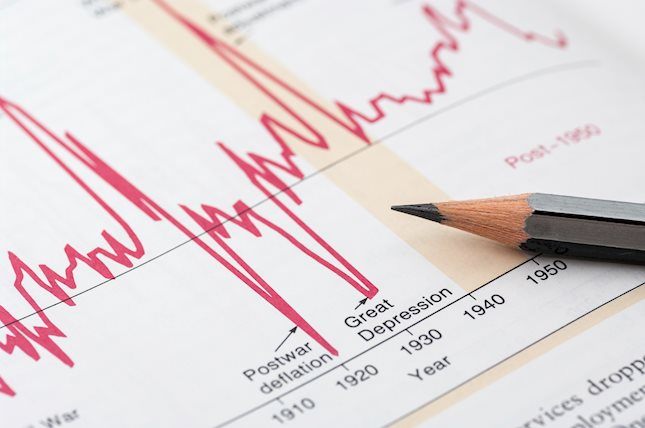- USD/CAD aims above 1.3950 with the US Dollar strengthening on Trump’s victory.
- Investors await the US CPI data for October and the commentary from a slew of Fed speakers.
- The BoC is expected to cut interest rates again by 50 bps in December.
The USD/CAD pair gathers strength to break above the immediate resistance of 1.3950 in Monday’s North American session. The Loonie pair sees more upside as the US Dollar (USD) surges to a fresh four-month high, with the US Dollar Index (DXY) rising to 105.60.
The reasoning behind Greenback’s rally is the Republican Donald Trump’s victory in the United States (US) presidential election. US fiscal deficit and inflationary pressures are expected to escalate, given that Trump vowed to raise import tariffs and lower corporate taxes in election campaigns. The scenario could force the Federal Reserve (Fed) to maintain a hawkish guidance on interest rates.
This week, investors will pay close attention to the US Consumer Price Index (CPI) for October, which will be released on Wednesday, and speeches from an array of Fed speakers for fresh interest rate guidance. Year-on-year headline inflation is estimated to have accelerated to 2.6% from 2.4% in September, with core CPI – which excludes volatile food and energy prices – rising steadily by 3.3%.
The impact of inflation is expected to be weak on the Fed monetary policy action in December unless there is a significant deviation from the consensus, as policymakers are confident about inflation remaining on track to the central bank’s target of 2%.
In the Canadian region, rising expectations of more interest rate cuts by the Bank of Canada (BoC) have weighed on the Canadian Dollar (CAD). BoC rate cut prospects have strengthened as Friday’s labor market data showed weak labor demand. The Canadian employment report showed that the economy added 14.5K workers, lower than estimates of 25K and from 46.7K in September. The Unemployment Rate remained steady at 6.5%, which was expected to accelerate to 6.6%.
The BoC reduced its key borrowing rates by 50 basis points (bps) by 3.75% in October and is expected to deliver a similar move in the December meeting.
Canadian Dollar FAQs
The key factors driving the Canadian Dollar (CAD) are the level of interest rates set by the Bank of Canada (BoC), the price of Oil, Canada’s largest export, the health of its economy, inflation and the Trade Balance, which is the difference between the value of Canada’s exports versus its imports. Other factors include market sentiment – whether investors are taking on more risky assets (risk-on) or seeking safe-havens (risk-off) – with risk-on being CAD-positive. As its largest trading partner, the health of the US economy is also a key factor influencing the Canadian Dollar.
The Bank of Canada (BoC) has a significant influence on the Canadian Dollar by setting the level of interest rates that banks can lend to one another. This influences the level of interest rates for everyone. The main goal of the BoC is to maintain inflation at 1-3% by adjusting interest rates up or down. Relatively higher interest rates tend to be positive for the CAD. The Bank of Canada can also use quantitative easing and tightening to influence credit conditions, with the former CAD-negative and the latter CAD-positive.
The price of Oil is a key factor impacting the value of the Canadian Dollar. Petroleum is Canada’s biggest export, so Oil price tends to have an immediate impact on the CAD value. Generally, if Oil price rises CAD also goes up, as aggregate demand for the currency increases. The opposite is the case if the price of Oil falls. Higher Oil prices also tend to result in a greater likelihood of a positive Trade Balance, which is also supportive of the CAD.
While inflation had always traditionally been thought of as a negative factor for a currency since it lowers the value of money, the opposite has actually been the case in modern times with the relaxation of cross-border capital controls. Higher inflation tends to lead central banks to put up interest rates which attracts more capital inflows from global investors seeking a lucrative place to keep their money. This increases demand for the local currency, which in Canada’s case is the Canadian Dollar.
Macroeconomic data releases gauge the health of the economy and can have an impact on the Canadian Dollar. Indicators such as GDP, Manufacturing and Services PMIs, employment, and consumer sentiment surveys can all influence the direction of the CAD. A strong economy is good for the Canadian Dollar. Not only does it attract more foreign investment but it may encourage the Bank of Canada to put up interest rates, leading to a stronger currency. If economic data is weak, however, the CAD is likely to fall.
Information on these pages contains forward-looking statements that involve risks and uncertainties. Markets and instruments profiled on this page are for informational purposes only and should not in any way come across as a recommendation to buy or sell in these assets. You should do your own thorough research before making any investment decisions. FXStreet does not in any way guarantee that this information is free from mistakes, errors, or material misstatements. It also does not guarantee that this information is of a timely nature. Investing in Open Markets involves a great deal of risk, including the loss of all or a portion of your investment, as well as emotional distress. All risks, losses and costs associated with investing, including total loss of principal, are your responsibility. The views and opinions expressed in this article are those of the authors and do not necessarily reflect the official policy or position of FXStreet nor its advertisers. The author will not be held responsible for information that is found at the end of links posted on this page.
If not otherwise explicitly mentioned in the body of the article, at the time of writing, the author has no position in any stock mentioned in this article and no business relationship with any company mentioned. The author has not received compensation for writing this article, other than from FXStreet.
FXStreet and the author do not provide personalized recommendations. The author makes no representations as to the accuracy, completeness, or suitability of this information. FXStreet and the author will not be liable for any errors, omissions or any losses, injuries or damages arising from this information and its display or use. Errors and omissions excepted.
The author and FXStreet are not registered investment advisors and nothing in this article is intended to be investment advice.
Recommended content
Editors’ Picks

EUR/USD struggles near 1.0550 amid dour mood
EUR/USD struggles near 1.0550 in the European morning on Thursday. The pair faces headwinds from risk-off flows due to rising geopolitical conflict between Russia and Ukraine and worries over the potential US tariffs on the EU. ECB- and Fedspeak are awaited.

GBP/USD trades around 1.2650, upside potential seems limited
GBP/USD keeps its range near 1.2650 in early European trading on Thursday. The pair's sidetrend could be attributed to the softer US Dollar and a risk-aversion market environment. Traders stay cautious amid rife geopolitical tensions and a light economic calendar. Fedspeak eyed.

Gold price retains its bullish bias near one-week high amid rising geopolitical risks
Gold price maintains its bid tone heading into the European session and currently trades around the $2,660 level, or a one-and-half-week high touched earlier this Thursday. This marks the fourth straight day of a positive move and is sponsored by geopolitical risks stemming from the worsening Russia-Ukraine war.

Shiba Inu holders withdraw 1.67 trillion SHIB tokens from exchange
Shiba Inu (SHIB) trades slightly higher, around $0.000024, on Thursday after declining more than 5% the previous week. SHIB’s on-chain metrics project a bullish outlook as holders accumulate recent dips, and dormant wallets are on the move, all pointing to a recovery in the cards.

Why Nvidia’s story is far from over
Nvidia delivers another earnings beat: Nvidia exceeded expectations with $35.08 billion in revenue, a 94% year-over-year increase, driven by strong performance in its data center business, which more than doubled to $30.8 billion.

Best Forex Brokers with Low Spreads
VERIFIED Low spreads are crucial for reducing trading costs. Explore top Forex brokers offering competitive spreads and high leverage. Compare options for EUR/USD, GBP/USD, USD/JPY, and Gold.